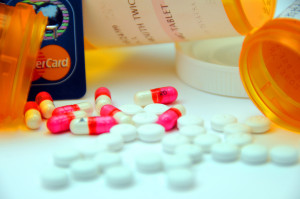Article Contributed by Crystal Karges, MS, RDN, IBCLC for Addiction Hope
 The years spent in college are both promising and challenging, with students facing new encounters that will define their future. In light of the exciting experiences that the college years offer, many students are not fully prepared for the choices they may have to make about substance abuse.
The years spent in college are both promising and challenging, with students facing new encounters that will define their future. In light of the exciting experiences that the college years offer, many students are not fully prepared for the choices they may have to make about substance abuse.
Some students anticipate college as a time to experiment with drugs or alcohol, and thereby disregard the exposure they may have as something dangerous.
Encountering Substance Abuse Is Nearly Unavoidable
Whatever the manner might be that a college student is exposed to drugs or alcohol, the chances that they will encounter the opportunity for substance abuse are high. According to the Substance Abuse and Mental Health Services Administration (SAMHSA), substance abuse issues on college campuses involve:
- Alcohol abuse
- Binge drinking
- The misuse of prescription drugs, such as
- Pain relievers
- Sedatives
- Stimulants [1]
Prescription Drugs Are Becoming More Popular
In recent years, the non-medical use of prescription medications among college students has increased dramatically. Research has shown that by students’ sophomore year in college, about half of their classmates will have been offered the opportunity to abuse a prescription drug [2].
What are some of the most commonly abused prescription drugs, and why are college students more prone to misusing them?
The Triggers for Substance Abuse in College
College students are facing stressors that are likely putting them beyond their comfort zone. This includes:
- Financial stressors of independent living
- Academic pressures for achievement
- Desires to be acceptable and fit in socially
- The overall decrease in parental oversight and supervision
Suddenly, students are finding themselves in need of balancing multiple facets of their lives that are in high demand, needing to fulfill multiple obligations. In the college life culture, drugs may seem to offer a temporary solution for managing stress, with more students becoming reliant on prescription medications for a mood boost, anxiety reducer, or for increased stamina.
The Most Widely Misused Prescription Drugs By College Students
For these reasons, the categories of prescription medications that are most widely abused and misused are as follows [3]:
-
Tranquilizers/Sedatives:
These drugs include Valium, Klonopin, Xanax, Ambien, and Ativan. Typically used to manage anxiety, sleep disorders, and panic attacks.
-
Stimulants:
This category of drugs includes Adderall, Ritalin, and Concerta. These drugs may be misused for increasing stamina and alertness.
-
Painkillers:
Drugs in this category include opioid analgesics, such as OxyContin, Methadone, Vicodin, and Percocet. Drugs may be misused for the purposes of achieving a high or dulling pain beyond the purpose of the prescription.
Many college students mistakenly believe that it is somewhat “safer” to consume prescription medications, as a harmless alternative to illicit drugs sold on the black markets, like marijuana or cocaine. Students will often receive prescription drugs from other fellow students, friends, or family members who have been legally prescribed medication by their doctors.
Sharing prescription medications among friends or peers is becoming socially acceptable within college culture, with more than half of undergraduate students who are legally prescribed a stimulant medication being asked to give away, sell, or trade their drugs [3].
Why Isn't College Prescription Drug Abuse a Bigger Deal?

Both the short and long term consequences of drug abuse are often overshadowed or disregarded. Many students might view their use of drugs as a means to an end without evaluating the way in which their future might be jeopardized. Delving into substance abuse could lead to a prolonged addiction problem, which would only wreck havoc and destruction.
As a college student, you can achieve positive outcomes from your journey by being prepared to effectively withstand social pressures for drug abuse. Here are some strategies that can help bolster confidence against overwhelming pressure to use drugs in college:
-
Understand the early signs of misuse:
Is a medication being used compulsively rather than as recommended by a physician? Is the drug being taken at higher dosses than what is prescribed? Are normal functions compromised due to misuse? These questions can help determine whether a drug is being misused or not.
-
Get connected:
The pressures students face in college can be overwhelming, especially if a student is feeling isolated or alone. Finding ways to network or be involved on campus can offer structure and accountability.
-
Know your reasons for saying no:
Becoming educated about drug abuse on campus can help a student better understand the dangers involved and encourage them to make better choices when it comes to substance misuse.
-
Get to know resources available:
Is there a wellness program on campus? Are counselors or mentors available for students? Perhaps the college promotes a drug awareness week? Knowing resources available on campus can help a student connect with early prevention and treatment measures.
Help and Support Are Available
Though the social pressures to take drugs can be overwhelming for the college student, there are several ways to withstand substance abuse during college years. Drugs are not the solution for succeeding through college and can only jeopardize and harm one’s future potential.
If you or a loved on is struggling with drug abuse on campus, learn more about ways you can get connected to treatment you need for recovery now.
References:
[1]: Substance Abuse and Mental Health Services Administration, http://www.samhsa.gov/data/nsduh/2k8nsduh/2k8Results.htm
[2]: Arria, A.M., Wish, E.D. (2006). Nonmedical use of prescription stimulants among students. Pediatric Annals, 35(8), 565-571. (also published in Psychiatric Annals, 2005, 35(3), 228-235)
[3]: “Taking Action to Prevent & Address Prescription Drug Abuse”, http://www.talkaboutrx.org/documents/GetTheFacts.pdf
